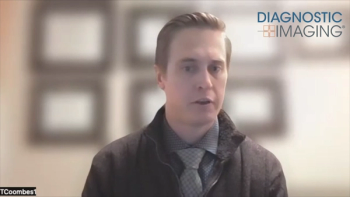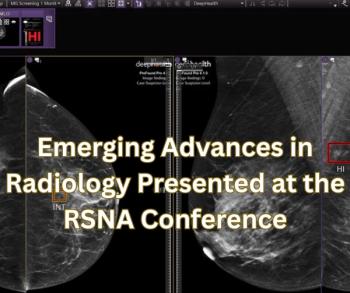
Emerging Radiology Research May Shed Light on Blocked Fallopian Tubes
Selective salpingography may provide enhanced assessment of fallopian tubes and fallopian tube recanalization could be a viable alternative to facilitate natural conception, according to new research from the Department of Radiology at the University of British Columbia.
The combination of selective salpingography to assess fallopian tubes and subsequent fallopian tube recanalization by an interventional radiologist could represent a significant advance for women with infertility, according to new research to be presented at the Society of Interventional Radiology (SIR) Annual Scientific Meeting June 11-16 in Boston.
In a study of 956 women who were previously diagnosed with blockages in one or both fallopian tubes via hysterosalpingogram (HSG), researchers examined the use of selective salpingography to confirm the HSG diagnosis and subsequent fallopian tube recanalization if indicated.
Selective salpingography, which involves X-ray guidance for the insertion of a tiny catheter in the cervix and subsequent contrast injection, revealed normal fallopian tubes in 226 patients (23.8 percent) who were previously misdiagnosed with blockages in one or both fallopian tubes. The researchers also noted that selective salpingography showed that 151 patients (15.9 percent) had significant tubal disease, a finding that would impact subsequent treatment choices in many cases.
For the 539 patients (56.3 percent) who did have unilateral or bilateral blockages, the study authors were able to perform fallopian tube recanalization. In many cases, the authors said the source of the blockage was mucus that was easy to remove.
“(The data indicate) diagnostic selective salpingography and therapeutic (fallopian tube recanalization) are safe and effective, resulting in patent normal tubes or highly specific clarification of underlying tubal disease,” noted lead study author Lindsay Machan, MD, FRCP(C), FSIR, an associate professor in the Department of Radiology at the University of British Columbia, and colleagues. “ … These findings suggest that fallopian tube intervention should have a broader role in the assessment and treatment of infertility, potentially allowing more women to conceive without assisted fertility procedures.”
Out of 724 patients who were diagnosed with unilateral occlusion on the initial HSG, 24 patients (3.3 percent) had unsuccessful recanalization or did not have the procedure, according to the study. For the 227 patients who had bilateral occlusion on the initial HSG, the study authors noted that 11 patients (4.8 percent) had unsuccessful recanalization or did not have the procedure.
Newsletter
Stay at the forefront of radiology with the Diagnostic Imaging newsletter, delivering the latest news, clinical insights, and imaging advancements for today’s radiologists.




























